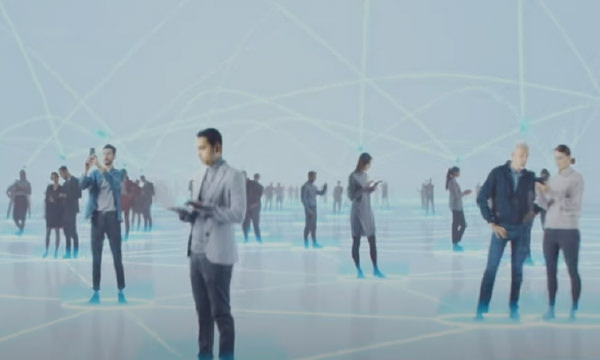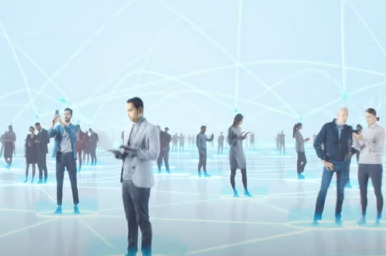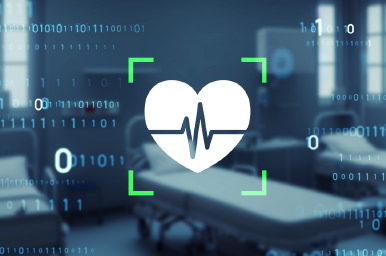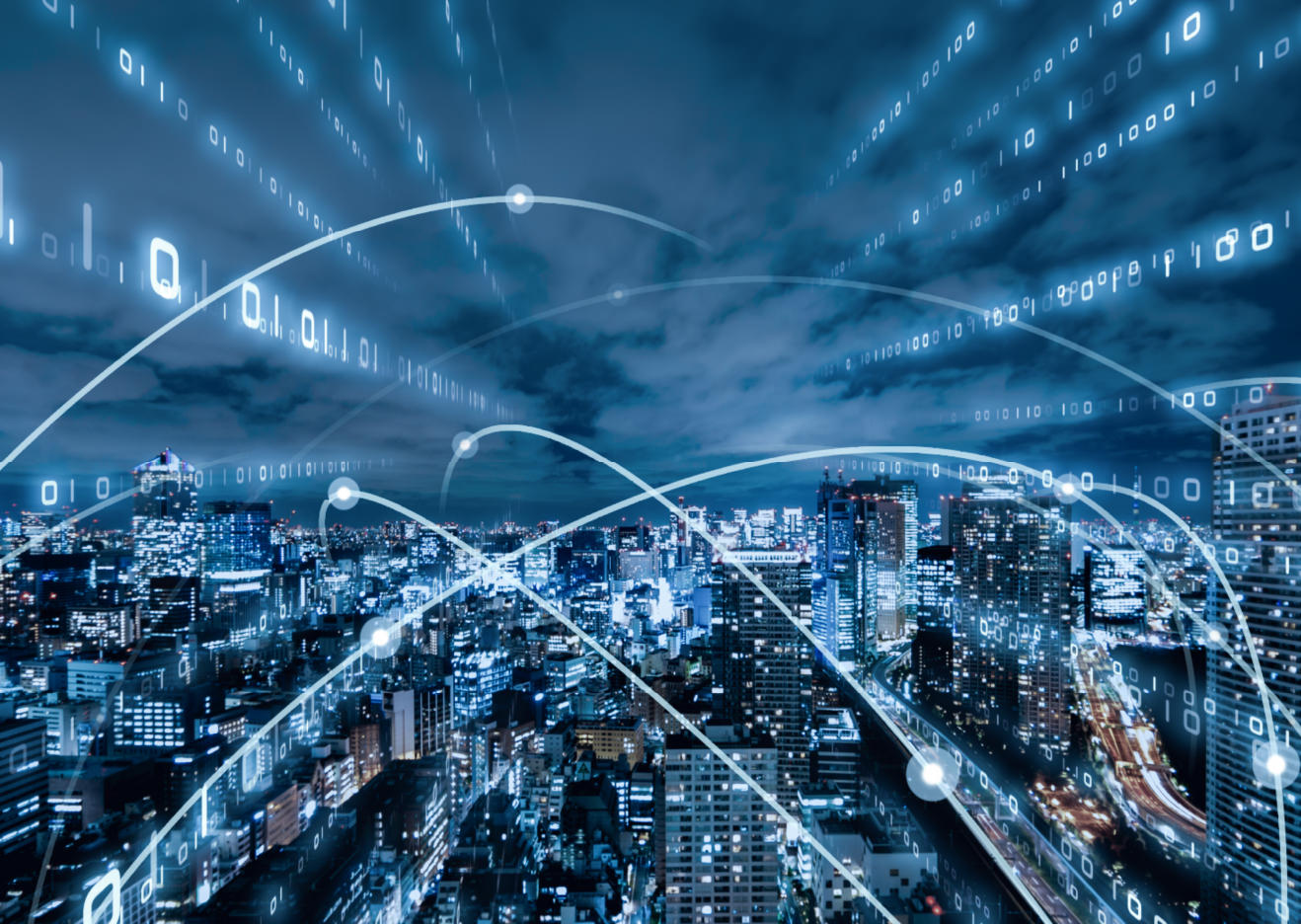A Monitoring Sensor That Uses Millimeter Waves
to Detect Invisible Human Heartbeats
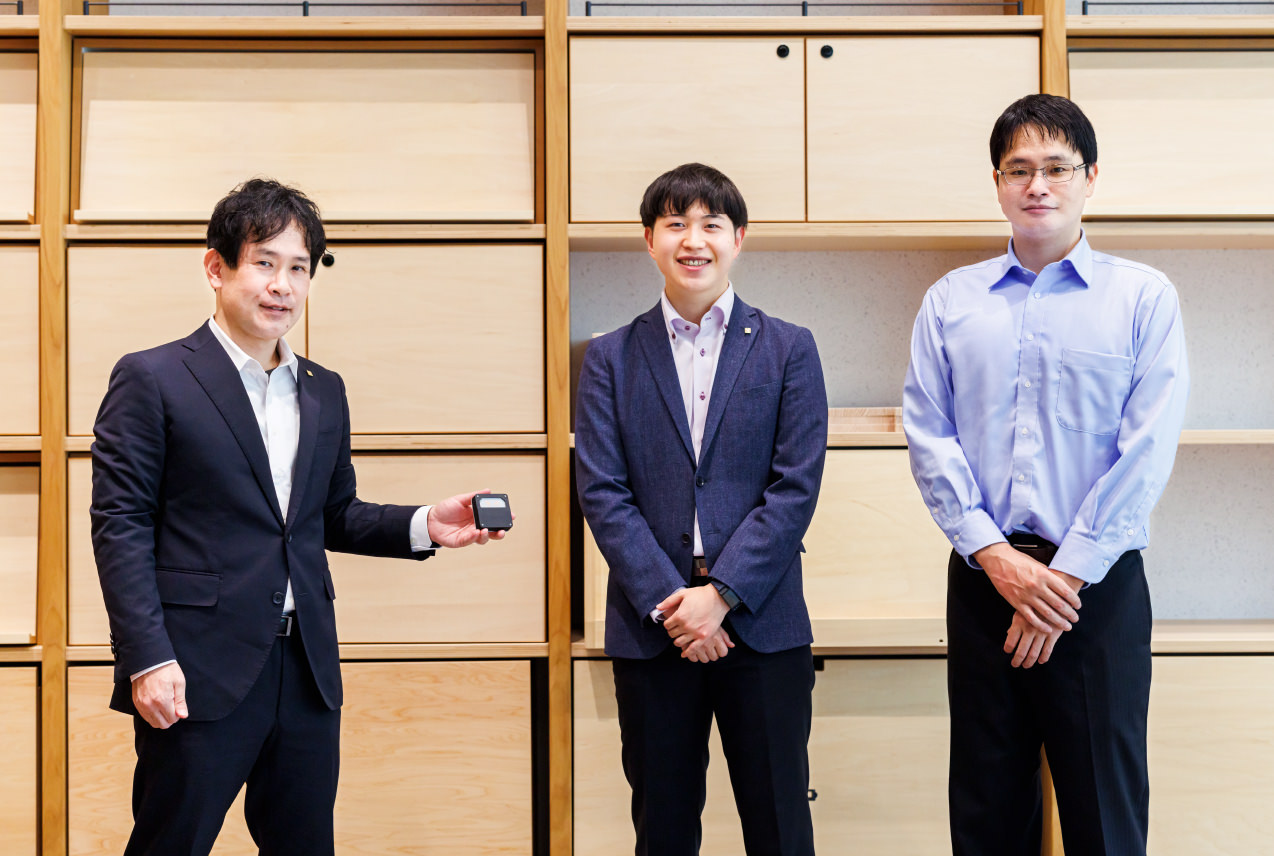

Aiming for More Advanced Contactless Measurement Technologies with Millimeter-Wave Sensors for Detecting Minute Vibrations

Due to Japan’s declining birthrate and aging and shrinking population, Japanese workplaces need to reduce unnecessary work processes and find labor savings solutions. In addition, particularly in the medical sector, there is a demand for technologies that gather fixed-point health data without the need for physical labor for use in preventive medicine and rapid response to health emergencies.
Healthcare devices such as smartwatches and smart rings are the most well-known devices for measuring health data. However, because most of these devices are wearables (i.e., require contact), problems still arise if the user needs to remember to put the device on or if wearing it against the skin causes stress or discomfort. Furthermore, after the COVID-19 pandemic, there has also been a sharp increase in the need for contactless monitoring in a medical environment. Therefore, there is a need for technologies that enable the collection of health data at any time while avoiding physical contact with the subject being monitored.
To tackle the issues of contactless operation and the detection of precise health data, Kyocera is focusing on a type of electromagnetic wave called a millimeter wave. By leveraging the advantages of millimeter-wave technology, which enables high-precision vibration detection at a distance, Kyocera is developing a sensor to obtain health data contactlessly.
Contactless Intelligent Millimeter-Wave Sensing System
Thanks to its low-noise millimeter-wave sensor technology, Kyocera has developed the Contactless Intelligent Millimeter-Wave Sensing System, which enables the high-precision detection and extraction of data from micron-level vibrations with no physical contact.
The system makes it possible to remotely and accurately detect respiratory fluctuations, heartbeats, and minute vibrations in machines and buildings.
From Capturing Data to Output and Analysis: Experts in Each Field Are Connecting Their Research
-
 ManagerWireless Research Section 2,
ManagerWireless Research Section 2,
Fundamental Technology Laboratory 1
Advanced Technology Research Institute
Corporate R&D Group -
 Contactless Intelligent Millimeter-Wave Sensing System Development EngineerWireless Research Section 2,
Contactless Intelligent Millimeter-Wave Sensing System Development EngineerWireless Research Section 2,
Fundamental Technology Laboratory 1
Advanced Technology Research Institute
Corporate R&D Group -
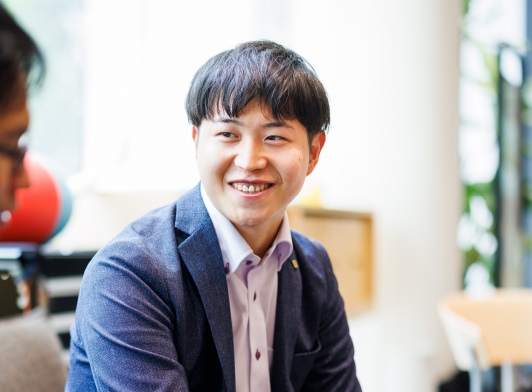 Contactless Intelligent Millimeter-Wave Sensing System Development EngineerAI Research Section,
Contactless Intelligent Millimeter-Wave Sensing System Development EngineerAI Research Section,
Fundamental Technology Laboratory 2
Advanced Technology Research Institute
Corporate R&D Group
-
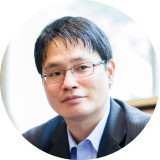
I joined Kyocera in 2016 because I had always found the development of telecommunications devices appealing, and since then, I have undertaken the development of technologies like voice and image recognition. I was interested in the possibilities of millimeter-wave even before I joined this team in 2022, but what was the original motivation for commencing research into millimeter-wave sensors?
-
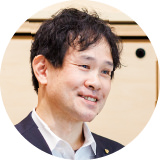
We began this research in 2019. With millimeter waves, whose wavelengths are short, it is possible to detect vibrations so small they are invisible to the human eye and to render them as data. We commenced development intending to create a sensor that could collect human heartbeat data at a similar level of accuracy to that of an electrocardiogram.
-

Usually, a person’s heartbeat is measured by attaching electrodes to their body or by putting a wearable device on their wrist. Where did the concept of measuring such detailed data without physical contact originate?
-

One of the primary factors was a rapid increase in the need for contactless sensing that arose out of the COVID-19 pandemic. Contactless technology was one answer we considered for obtaining health data more efficiently and continuously. Technologies for measuring the heartbeat—for example, smartwatches—already exist, but if you are told that from tomorrow, you must wear a device every day, it is a surprisingly difficult habit to pick up. As such, we wondered if it might be possible to create a situation where sensors were used to monitor an entire living space, thereby enabling people’s heartbeats to be measured without them realizing it.
-

You can use sensors to monitor entire spaces like living rooms and bedrooms, where people spend a lot of time. In that case, it is possible to gather helpful information stably and continuously for healthcare and preventive medicine. It is exciting to think this will create spaces where—without inconveniencing people—data about their physical conditions are accumulated to use in illness prevention. Simply by being there, their health can improve.
-

I think so, too. But initially, the advantage of monitoring an entire space also hampered us. Because you send electromagnetic waves throughout the area, the sensors also catch other vibrations, such as those from people walking around or chatting. Because of this, we had considerable difficulty extracting only heartbeat from an enormous range of vibration data. But a strength of Kyocera is that it is easy for engineers to interact with each other across various fields. So, by seeking help from researchers outside the team, we found a method for extracting only the vibration data we wanted.
-

As the person responsible for system development, thanks to fellow researchers overcoming obstacles such as these, I was also able to come up with a method for outputting the gathered data. I am currently working on system development for visualizing electromagnetic wave data that is invisible to the human eye in a form that benefits users. Simply put, I am responsible for “translating” data. Or, in other words, converting the raw vibration data captured into positional information of where people are within a space and into graphs depicting information, for example, heart rate waveforms, that is useful in healthcare.
-

My role is to undertake an even deeper analysis of data that has been translated in that way. Of course, it is also possible to gather valuable information for people’s health from heartbeat waveforms*1 that have been translated from vibrations. Still, I am attempting to investigate whether capturing other information is possible.
-
- *1. Vibration waveforms corresponding to the sound of a heartbeat.
-

We are not only evolving sensing functions but also extracting only the data valid for healthcare, visualizing the data, undertaking analysis, and so on. Thanks to the addition of technology that is developed based on the ideas and fresh perspectives of junior researchers like yourselves, we are making quick progress toward the point at which the millimeter-wave sensor is helpful to society.
Limitless Possibilities that Go Beyond Healthcare
What Will Millimeter Waves Bring About for Sensing in the Future?
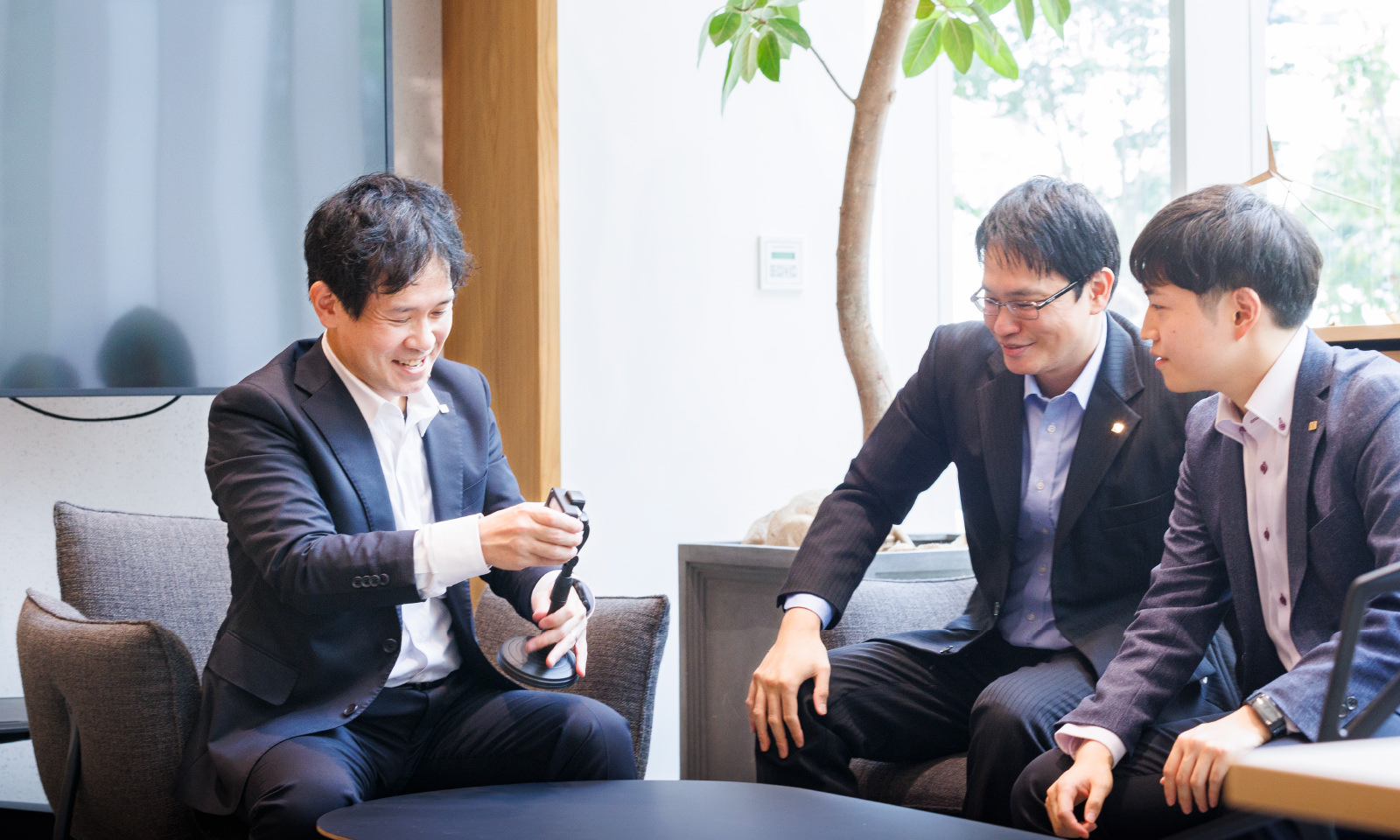
-

With developmental analysis of data captured by the millimeter-wave sensor, I think my research expertise in autonomous driving—in which I became involved just after joining Kyocera—is being put to good use.
-

After joining this team in 2022, you have also continued with research in the field of autonomous driving. Specifically, how is this useful when it comes to the development of millimeter-wave sensors?
-

In autonomous driving, we are creating a system that prevents drivers from falling asleep at the wheel by analyzing their facial expressions and detecting whether they are awake. In addition, analysis of the data detected enables more complex and sophisticated judgments. Undertaking research that straddles multiple fields has helped us incorporate those analytical viewpoints into our millimeter-wave sensor.
-

With the addition of perspectives from other fields, the possibilities for this device are likely to expand even further. This is very reassuring. Incidentally, what kind of analysis would you like to add, and what kind of functions would you like to implement with data from millimeter-wave sensors?
-

My goal is to produce technology for psycho-emotional monitoring based on heart rate data captured by the millimeter-wave sensor. Specifically, I am contemplating whether, based on a person’s heart rate, it may be possible to calculate if the person feels comfortable in a specific space and to clarify their emotions and physical condition by reading fluctuations in their autonomic nervous system. If it becomes possible for a machine to interpret psycho-emotional states, which are difficult to quantify, I think this will be of use in our everyday lives.
-

It may also be possible to use the vibration detection function of the millimeter-wave sensor to monitor infrastructure facilities. For example, earthquakes frequently occur in Japan, and for disaster preparedness, it is essential to undertake routine inspections to assess structural supports for bridges, expressways, skyscrapers, and so on. However, inspections involve dangerous work, such as in high places, and problems such as labor shortages and inspection costs are also becoming more apparent. Therefore, suppose we install millimeter-wave sensors in advance in areas where routine inspections are necessary and check the extent of internal deterioration based on the detected vibrations. In that case, it is possible to solve such problems very quickly.
-

The fact that we have developed the millimeter-wave sensor as a small, inexpensive device will likely help inspect infrastructure. It is also technologically possible to undertake the same kinds of inspections using lasers. However, the cost of lasers would amount to several million yen per location, which makes them unrealistic. The ability to focus on practical use and develop everything comprehensively—from software to hardware—and implement a stable production system are unique characteristics of Kyocera, whose strength is in manufacturing.
-

While working with each other, the engineers tackle their goals in a multifaceted way to solve society’s problems. This attitude toward research is taking root within Kyocera. As junior employees, feeling that we can each contribute to manufacturing that benefits people helps us grow.
-

In the future, I would like us to work more and more on research and development that expands the possibilities for the millimeter-wave sensor through different ways of interpreting and analyzing vibration data. Let’s continue to do our best until the day comes when this device is used to help people in their everyday lives!
Related Information
Understanding New Challenges and Future Projects
Being Undertaken at Kyocera
Kyocera’s Main Growth Markets
-
 Ever since the company was founded in 1959, Kyocera has engaged in the application and development of advanced ceramic (also known as “fine ceramic”) technology in a wide range of fields, from materials and parts to devices, services, and networks. This site looks at the various technologies shaping the future.
Ever since the company was founded in 1959, Kyocera has engaged in the application and development of advanced ceramic (also known as “fine ceramic”) technology in a wide range of fields, from materials and parts to devices, services, and networks. This site looks at the various technologies shaping the future. -
 Kyocera has been developing market-leading breakthroughs since its very inception. In this website,we present information on Kyocera’s intellectual property and licensing programs that can bring new value to the world.
Kyocera has been developing market-leading breakthroughs since its very inception. In this website,we present information on Kyocera’s intellectual property and licensing programs that can bring new value to the world. -
 Kyocera’s open innovation initiative brings together technologies and ideas from both within and outside the company to create new value and develop new businesses.
Kyocera’s open innovation initiative brings together technologies and ideas from both within and outside the company to create new value and develop new businesses.


